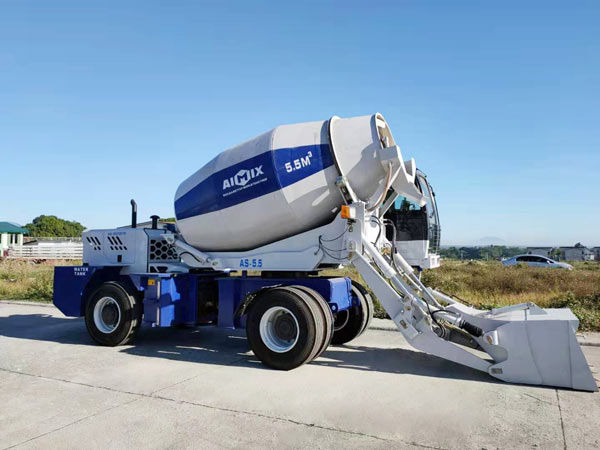Does Weather Affect Concrete Mixer Self Loading Work?
- aimixglobal2024
- 2024年11月24日
- 讀畢需時 3 分鐘
Weather conditions play a significant role in construction projects. Understanding how weather affects concrete mixer self-loading work is crucial for ensuring quality and efficiency. In this article, we will explore the impact of different weather conditions on the use of self-loading concrete mixers. This information will be valuable for contractors and operators looking to optimize their operations.

Impact of Temperature
Temperature is one of the most critical factors affecting concrete mixer self-loading work. Both high and low temperatures can influence the quality and efficiency of the mixing process.
High Temperatures
High temperatures accelerate the curing process of concrete. This rapid curing can lead to reduced workability and potential cracking. To mitigate this, use chilled water or ice in the mix. Additionally, schedule pours during cooler parts of the day to maintain optimal conditions.
Low Temperatures
Low temperatures slow down the curing process, leading to longer setting times. This delay can affect project timelines. Use warm water in the mix to counteract the cold. Covering the poured concrete with insulated blankets can also help maintain an ideal curing temperature.
Effect of Humidity
Humidity levels can significantly impact the performance of self-loading concrete mixers. Both high and low humidity conditions present unique challenges.
High Humidity
High humidity can lead to excess moisture in the mix. This excess moisture affects the strength and durability of the concrete. Adjust the water-cement ratio to account for additional moisture. Ensure proper ventilation to reduce humidity levels around the work area.
Low Humidity
Low humidity conditions can cause rapid evaporation of water from the mix. This rapid evaporation leads to premature drying and potential cracking. Use water-retaining agents or mist the concrete surface to maintain adequate moisture levels. Covering the concrete with plastic sheets can also help retain moisture.
Influence of Wind
Windy conditions can affect the mixing and curing process of concrete. Wind can cause rapid evaporation and impact the quality of the mix.
High Winds
High winds increase the rate of evaporation from the concrete surface. This rapid evaporation can lead to surface cracks and reduced strength. Use windbreaks to shield the work area from strong winds. Additionally, misting the surface can help maintain moisture levels.
Low Winds
Low wind conditions generally pose fewer challenges for concrete mixing. However, stagnant air can lead to higher humidity levels. Monitor humidity and adjust the mix accordingly to ensure optimal conditions.

Rain and Moisture
Rain and excessive moisture can significantly impact concrete mixer self-loading work. It is essential to take precautions to protect the mix and equipment from rain.
Rain
Rain can introduce excess water into the concrete mix, affecting its consistency and strength. Cover the mixer and the work area with tarps or plastic sheets. Schedule work around weather forecasts to avoid pouring concrete during rain.
Excessive Moisture
Excessive moisture can lead to a weaker mix and potential structural issues. Ensure proper drainage and avoid working in waterlogged areas. Adjust the water-cement ratio to account for additional moisture in the environment.
Seasonal Considerations
Different seasons present unique challenges and considerations for concrete mixer self-loading work. Understanding these seasonal effects can help optimize operations throughout the year.
Summer
Summer brings high temperatures and potential humidity. Plan work during cooler parts of the day and adjust the mix to account for temperature and humidity. Using chilled water and proper ventilation can help maintain optimal conditions.
Winter
Winter introduces low temperatures and potential freezing conditions. Use warm water in the mix and insulated blankets to maintain curing temperatures. Avoid working in extremely cold conditions to prevent freezing and cracking.
Spring and Fall
Spring and fall offer more moderate temperatures but can still present challenges with rain and fluctuating humidity. Monitor weather forecasts and adjust the mix and schedule accordingly. Proper planning ensures consistent quality and efficiency during these transitional seasons.
Conclusion
Weather significantly affects concrete mixer self-loading work. Understanding the impact of temperature, humidity, wind, and moisture is crucial for optimizing operations. By adjusting the mix and taking appropriate precautions, you can maintain quality and efficiency under various weather conditions. Seasonal considerations further help in planning and executing construction projects effectively. Staying informed about weather impacts will lead to better outcomes and more successful projects.




留言